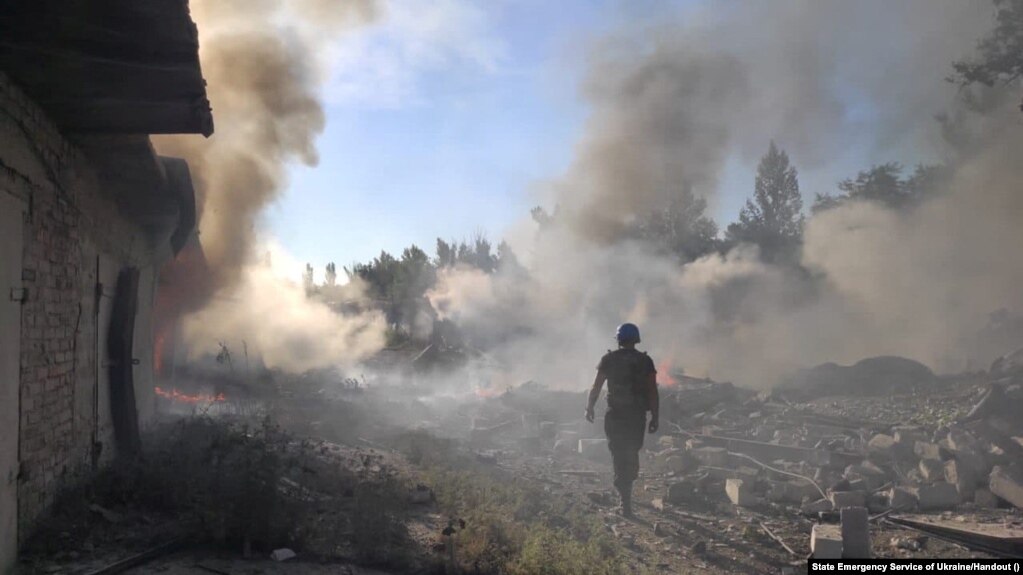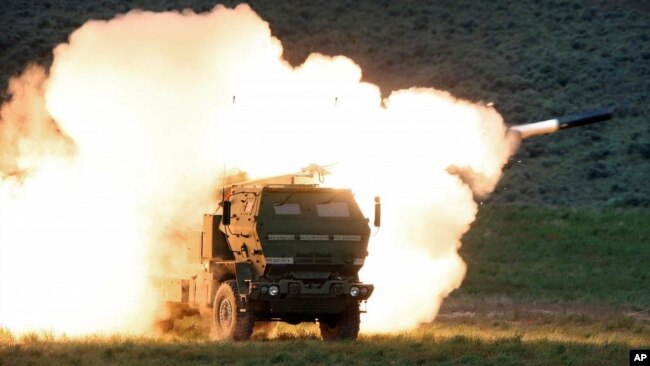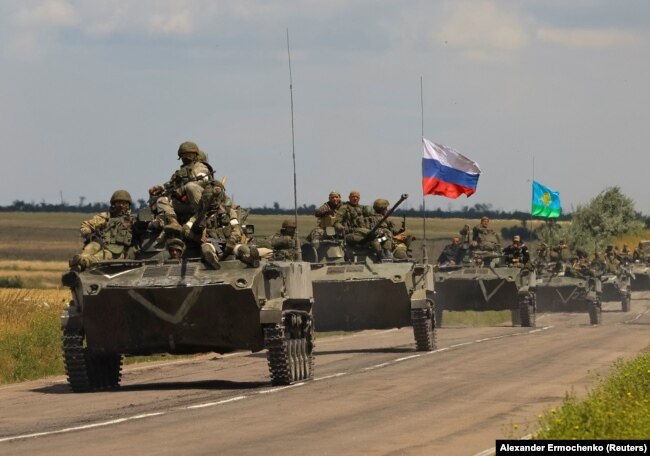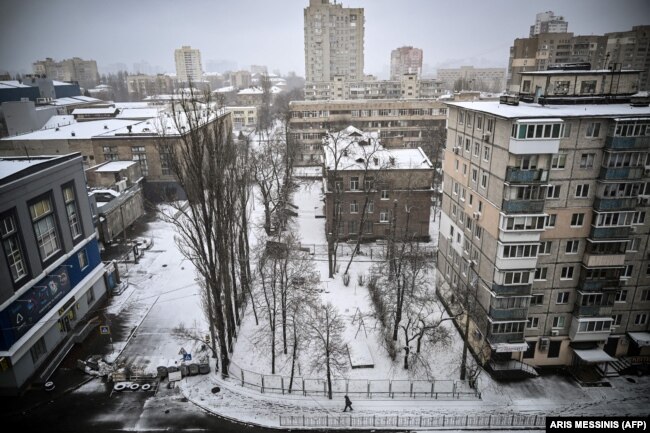Reid Standish

Ukrainian forces continue to use U.S.-supplied precision rocket systems to target Russian supply lines in occupied parts of southern Ukraine as Kyiv signals the possible launching of a major counteroffensive in the region.
The high-mobility artillery rocket systems (HIMARS) provided by the United States to Ukraine have a longer range, superior precision, and a faster rate of fire compared with the Soviet-designed ones used by Russian and Ukrainian forces and their use has allowed the Ukrainians to hit targets -- such as the Antonivskiy Bridge that crosses the Dnieper River in the Kherson region -- that military analysts say will make it much harder for Russian forces to operate smooth supply lines and defend land they have seized.
But while the introduction of Western weaponry and the uptick of targeted attacks point to growing momentum on the Ukrainian side, how capable are Kyiv's forces of launching an offensive to retake and hold territory from Russia that it has occupied since the early days of its invasion?
To find out more, RFE/RL spoke with Chris Dougherty, a former U.S. defense official and fellow at the Center for a New American Security, a Washington-based think tank.
RFE/RL: Ukrainian officials have said they plan to retake southern Ukraine by the end of September, and we are already seeing increased fighting around Kherson as Ukrainian forces slowly regain some territory there. Does this seem like an attainable goal for the Ukrainians?
Chris Dougherty: I think it depends on how you define southern Ukraine. I think if you define it as Kherson and the area around it, then perhaps they can be successful by the end of September.
But if you include Crimea and the rest of southern Ukraine, then I think that the answer is no. It's probably not attainable given the equipment and reserves of materiel that they have at present.
 U.S.-made HIMARS during a training exercise.
U.S.-made HIMARS during a training exercise.RFE/RL: Kyiv has been hitting Russian supply lines with HIMARS donated by the United States and also focused on other high-value targets of late. Is that behavior on Ukraine’s part setting the stage for a counteroffensive to retake Kherson?
Dougherty: I think the answer to the immediate question, in theory, is yes. Although, we have seen them used differently by the Ukrainians during the fighting in the Donbas and that gets to some critical distinctions and decisions for both Ukrainian and NATO planners.
In the Donbas, the Ukrainians were using HIMARS to essentially halt a Russian offensive by sapping its firepower and hurting its logistical support, as well as its command and control. When you hit targets like those, it can deprive the other side of ammunition and equipment, and then lead to it running out of steam because their commanders are no longer there to tell troops what to do. This is particularly the case in the Russian [military], which has a pretty centralized command and control system. Once you cut off the head, the body doesn't tend to do all that much.
So in Donbas, Ukraine was trying to stem the bleeding that had happened...in those intense battles and stabilize things, but the doctrinal use for HIMARS in Western armed forces is to use them to prepare for an assault. That may be how they are being used now.
 The Antonivskiy Bridge over the Dnieper River on July 20 before it was hit by a Ukrainian rocket strike.
The Antonivskiy Bridge over the Dnieper River on July 20 before it was hit by a Ukrainian rocket strike.The problem with preparing for an assault -- and I think this is a concern for NATO and U.S. planners -- is that they’re not sure that the Ukrainians have enough mass of men, materiel, and munitions to actually carry through an assault that can break through the Russian lines.
Instead, what we might see is a kind of creeping assault similar to what we saw from the Russians as they moved forward in Donbas. There would be fighting with high losses in terms of men and equipment while only advancing maybe a kilometer or two at a time.
RFE/RL: We’ve heard multiple Western officials, including most recently Richard Moore, the head of the U.K.’s MI6, express the view that Russia could be about to run out of steam in Ukraine, as its forces find it increasingly difficult to supply manpower and material over the coming weeks. Do you agree with this assessment? Where do you see Russia’s momentum at the moment?
Dougherty: I don't think the Russians are on the verge of collapse, and if they were, then the Ukrainians probably are, too.
The reason for that is just if you look at the raw attrition rates on both sides you can see how ground-down they each are. For people who are fans of boxing, we are now in round 12 or 13 of a 15-round fight and these two sides have been launching haymakers at each other since the beginning. Now they're both woozy and each is trying to figure out how to launch one last punch to change the facts on the ground before winter sets in and the strategic calculus really starts to change.
I’d actually say that one of the reasons for the urgency on the Ukrainian side is that they know that the strategic calculus changes to Russia's advantage once cold weather sets in and certain gas supplies stop rolling into Europe.
 An armored convoy of Russian troops drives in a Russian-occupied part of Ukraine’s Zaporizhzhya region on July 23.
An armored convoy of Russian troops drives in a Russian-occupied part of Ukraine’s Zaporizhzhya region on July 23.RFE/RL: You mention that the winter is a looming deadline in a way for the Ukrainians. Another one appears to be the desire signaled by Russian officials to annex parts of -- or all of -- southern Ukraine in the fall. How do these time constraints affect the strategic calculus for both Kyiv and its Western partners?
Dougherty: I think Russian attempts to annex parts of Ukraine are mostly meaningless because they won't be recognized internationally. Russia will try to say that this is [their] territory and use that as a reason to say why they can’t be attacked there, but I just don’t really find that as a credible threat.
But the threat of gas getting turned off to Europe in the midst of winter is a credible threat. It's something that we've seen used as a political weapon before, and I think we will see it used as a political weapon again.
I think the Ukrainians are extremely concerned that the cohesion of the Western alliance that is keeping their military afloat will degrade once the onset of cold weather really starts to make Europeans question why they are sacrificing so much on behalf of Ukraine. Now, there's been a lot of cohesion from February until now and it won’t go away all of a sudden, but there is a significant possibility that the impetus and cohesion behind this alliance could start to feel the pinch of depleted energy supplies.
 A man walks on the snow-covered pavement in an empty street of Kyiv a week after Russia launched its invasion of Ukraine in February.
A man walks on the snow-covered pavement in an empty street of Kyiv a week after Russia launched its invasion of Ukraine in February.And so I think the Ukrainians are correctly seeing the political dimensions of military strategy and those political dimensions are [moving] them toward a more aggressive push for a counterattack, particularly in the south.
On the other hand, I think NATO is looking at the military factors at play and seeing that Kyiv doesn’t have the reserves of manpower and materiel to launch a major offensive and, if they do, it could become another meat grinder.
This is an enormous-scale conflict in the second-largest country in Europe, and I think it will be hard for [Kyiv] to maintain all these different fronts in the north, east, and south while at the same time gathering enough manpower to launch an offensive. So there is a call on the NATO side to wait until later, perhaps until spring 2023, when Ukraine can really build up a lot of force to do this.
The problem is that time works for both sides, and Russia could rebuild some of its offensive or defensive power by 2023, too. Ukraine also has concerns -- not unfounded ones, either -- that the depth of their support could erode by then, so they feel they need to act sooner than later.
No comments:
Post a Comment